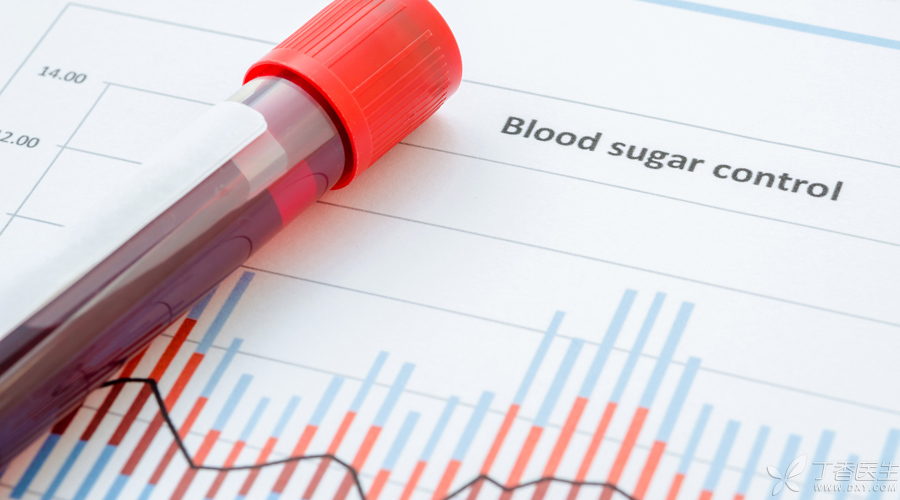
As we all know, our blood sugar is always changing.
Doctors often require diabetics to monitor their blood sugar, but diabetics often have such perplexities:
How many times do I have to measure my blood sugar every day?
Why do I have to take these blood sugar tests?
Today, Dr. Clove will tell you about measuring blood sugar.
Blood sugar is changeable but regular.
Although our blood sugar is often changing, there are also corresponding rules to follow.
General rule
The general rule of blood sugar is that the blood sugar before meals is lower, while the blood sugar after meals is higher. The blood sugar of normal people, whether on an empty stomach or after meals, remains within a certain range with little change.
Lowest point
Generally speaking, the blood sugar is at the lowest point at 3 or 4 o’clock in the morning. Generally, the blood sugar is not lower than 3.3 mmol/L in the early morning. With the increase of glucocorticoid and other glucose-raising hormones in the body, the blood sugar also gradually increases. The fasting blood sugar of normal people should be in the range of 3.3 ~ 6.1 mmol/L.
Highest point
The blood sugar level of 0.5 ~ 1 hour after meal is usually the highest, generally below 10.0 mmol/L for normal people, and not more than 11.1 mmol/L at most. Then the blood sugar gradually decreases, and the blood sugar of normal people will drop below 7.8 mmol/L 2 hours after meal.
Therefore, referring to the above blood sugar change rule, the blood sugar control target for diabetic patients is often set at fasting blood sugar 4.4 ~ 7.0 mmol/L and non-fasting blood sugar < 10.0 mmol/L. Of course, this control target will be adjusted accordingly according to age, illness time and risk of complications. The specific personal target needs to be determined by consulting a doctor.
Monitoring blood sugar, different schemes
Generally speaking, diabetic patients often use blood glucose meters to monitor capillary blood glucose.
The specific monitoring plan needs to be consulted by a doctor, who is asked to determine it according to the disease control situation and treatment plan.
Here, Dr. Clove gives a common blood sugar monitoring plan for your reference:
1. Generally speaking, for patients with type 2 diabetes who take oral hypoglycemic drugs, blood sugar needs to be monitored 2-4 times a week on an empty stomach or 2 hours after meals; Or monitor blood sugar for 3 consecutive days within one week before seeing a doctor, and monitor blood sugar before breakfast, lunch and dinner, 2 hours after breakfast, lunch and dinner and before going to bed every day.
2. For patients with type 2 diabetes who use basic insulin, fasting blood glucose needs to be monitored every day.
3. For patients using premixed insulin, fasting blood glucose and predinner blood glucose need to be monitored; If fasting blood glucose reaches the standard (4.4 ~ 7.0 mmol/L), postprandial blood glucose needs to be monitored.
4. For patients who use insulin during meals, blood sugar after meals or before meals with the next meal needs to be monitored.
5. For patients with type 1 diabetes, there are different modes of blood sugar monitoring frequency, which can be referred to:
- Strengthen the blood sugar monitoring mode: including before three meals + 2 hours after three meals + before going to bed + when necessary, it is suitable for determining the blood sugar management plan for hospitalization, when the blood sugar management plan is adjusted greatly, and when the risk of hypoglycemia is large; Postprandial blood sugar monitoring mode: before three meals + before going to bed + when necessary, it is suitable for patients with blood sugar control and better, but glycosylated hemoglobin does not meet the standard, or makes relatively large adjustments to the diet plan; Before breakfast + 2 hours after three meals + before going to bed + when necessary, it is suitable for patients who apply premixed insulin before dinner and need to know whether there is any risk of hypoglycemia in the early morning and fasting. Simplified blood sugar monitoring mode: before breakfast + before going to bed + when necessary, it is suitable for patients whose overall blood sugar and glycosylated hemoglobin meet the standards and whose blood sugar management scheme is stable.
6. It should be noted that when hypoglycemia symptoms occur (such as hunger, dizziness and palpitation), blood sugar should be monitored in time before and after strenuous exercise and when diet adjustment is large.
